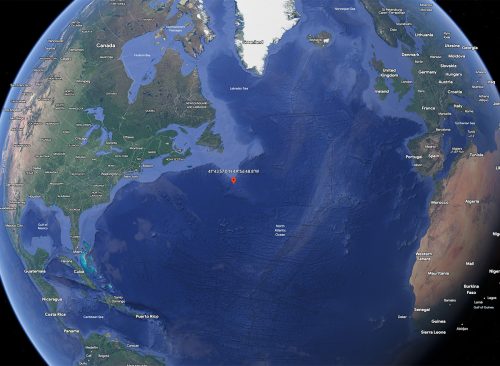How Did the Titanic Sub Implode? 7 Theories
Unraveling the mysteries and investigating the tragic implosion of the Titanic sub.
The recent OceanGate disaster, where the submersible Titan imploded during a dive at the site of the Titanic wreck, has sparked significant interest and raised questions about the causes behind this tragic incident. Renowned director James Cameron, who has explored the Titanic wreck numerous times, has drawn parallels between the sub’s implosion and the historic sinking of the Titanic in 1912. With experts and engineers examining the available evidence, several theories have emerged to explain how the Titanic sub imploded, The UK Times reports. Read on to explore seven theories that shed light on this catastrophic event.

According to The UK Times, the immense pressure exerted by the depths of the ocean is a primary concern for any submersible. The Titan submersible had to withstand the pressure of thousands of meters of ocean above it. If the hull failed to handle this pressure, it could result in an implosion. The extreme conditions at the Titanic wreck site could have pushed the sub to its limits, leading to a catastrophic failure.

Experts have pointed out potential design flaws in the Titan submersible that could have contributed to its implosion. Unlike traditional deep submersibles with rounded habitable sections, Titan featured a titanium sphere extended using a carbon fiber cylinder. The point where the carbon fiber hull joined the titanium hemispheres might have created a weak spot susceptible to failure under extreme pressure.

The repeated stress endured by the submersible during its previous dives could have caused fatigue in its structure. Just as bending a wire back and forth weakens it, the cyclic loading experienced during dives might have led to hidden structural damage. Over time, these hidden stresses could have accumulated and eventually caused the sub to implode.

Delamination refers to the separation of layers within a composite material. In the case of Titan, the carbon fiber cylinder and titanium hemispheres could have experienced delamination, making the structure vulnerable to failure. Delamination is akin to splitting wood along the grain, which is easier than cutting across it. If this separation occurred at a critical point, it could have resulted in the sub’s implosion.

Stockton Rush, the CEO of OceanGate, admitted that the design of the Titan submersible was unconventional. The combination of carbon fiber and titanium, which is generally discouraged, was employed to accommodate more paying guests. This departure from conventional design practices could have increased the risk of structural failure, contributing to the sub’s implosion.

Questions have been raised about why OceanGate did not engage outside organizations specializing in marine classification to certify the safety of the submersible. Independent testing could have identified potential flaws or weaknesses before the catastrophic event. The absence of such verification and certification processes raises concerns about the submersible’s safety measures.

James Cameron highlighted the importance of heeding warnings, drawing a parallel between the Titanic’s fateful voyage and the submersible’s implosion. Several members of the submersible community had expressed concerns about the risks associated with the Titan submersible, but their warnings were reportedly disregarded. This failure to acknowledge and address potential safety issues might have contributed to the tragic outcome.

The implosion of the Titan submersible during a dive at the Titanic wreck site has triggered investigations into the causes of this disaster. While the exact reason behind the implosion is yet to be determined, several theories shed light on the possible factors at play. The extreme pressure, design flaws, fatigue, delamination, nonstandard design choices, lack of independent testing, and failure to heed warning signs all form part of the complex puzzle surrounding this tragic event.















